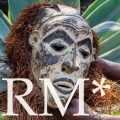Acknowledging the emotional depth of the occasion, Prof. van Broekhoven reflected on the museum’s long history with these remains and expressed hope that the process would bring healing to all involved.
The Pitt Rivers Museum (PRM) in Oxford, which houses 213 human remains of Nagas among other artefacts from across the globe, had in 2020 announced it would remove the human remains and other “insensitive exhibits” from the display.
The Naga ancestral remains collection in the Pitt Rivers Museum consists of human skulls and bones, and human hair attached to cultural items including basketry, spears, shields and ornaments. The provenance of these remains is unclear.
Some clearly state that they were confiscated by British administrators from Naga villages, while others were taken as loot in the violence that ensued. The labels have limited information and much of people’s histories and their encounters with colonialism has been undocumented and erased.
Reverend Dr. Ellen Konyak Jamir, RRaD coordinator and FNR member, said that the delegation had arrived “with hearts heavy with history.” She emphasized that their mission was both sacred and necessary, as it represented an effort to reclaim the physical remains of Naga ancestors who had been taken away generations ago.
Dr. Ellen praised PRM for its commitment to ethical stewardship and willingness to confront difficult histories.
Dr. Sanyü’s chant, titled “Our Ancestor,” evoked the parting of the Naga ancestor from the creator, concluding with a hopeful plea for the ancestor’s reunion with the creator and the healing of historical wounds.


